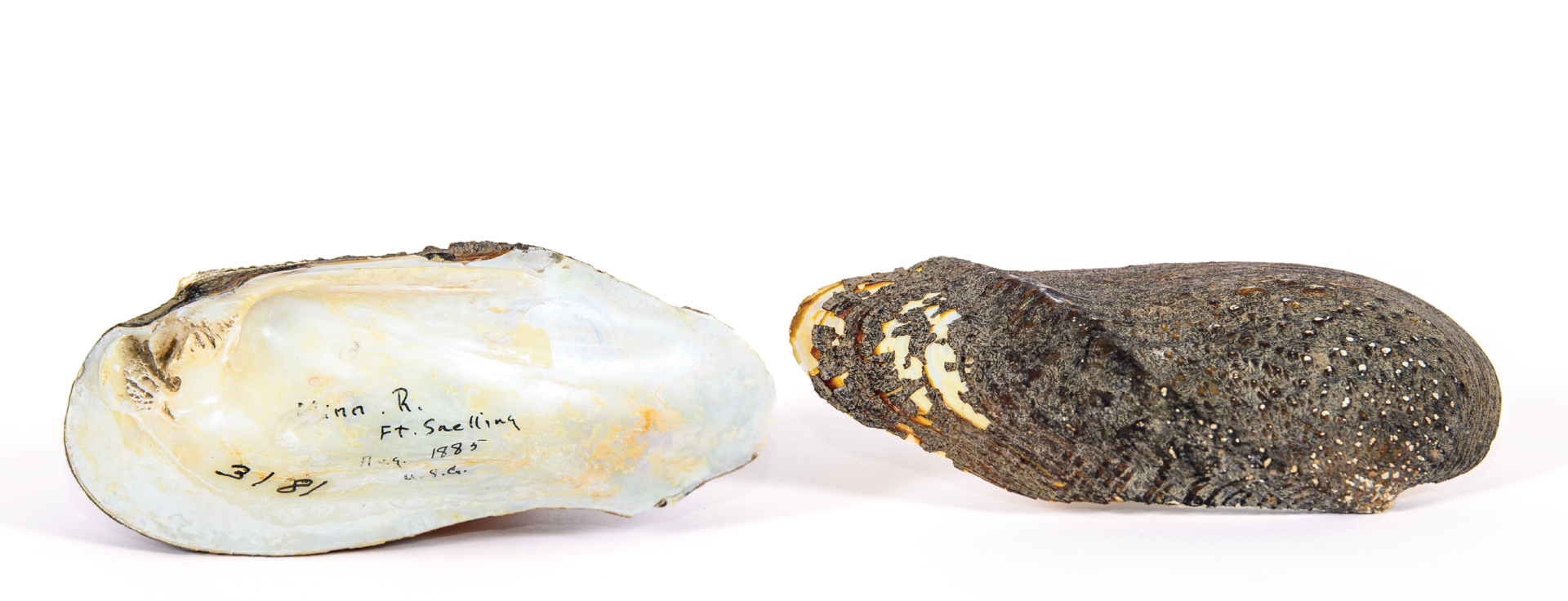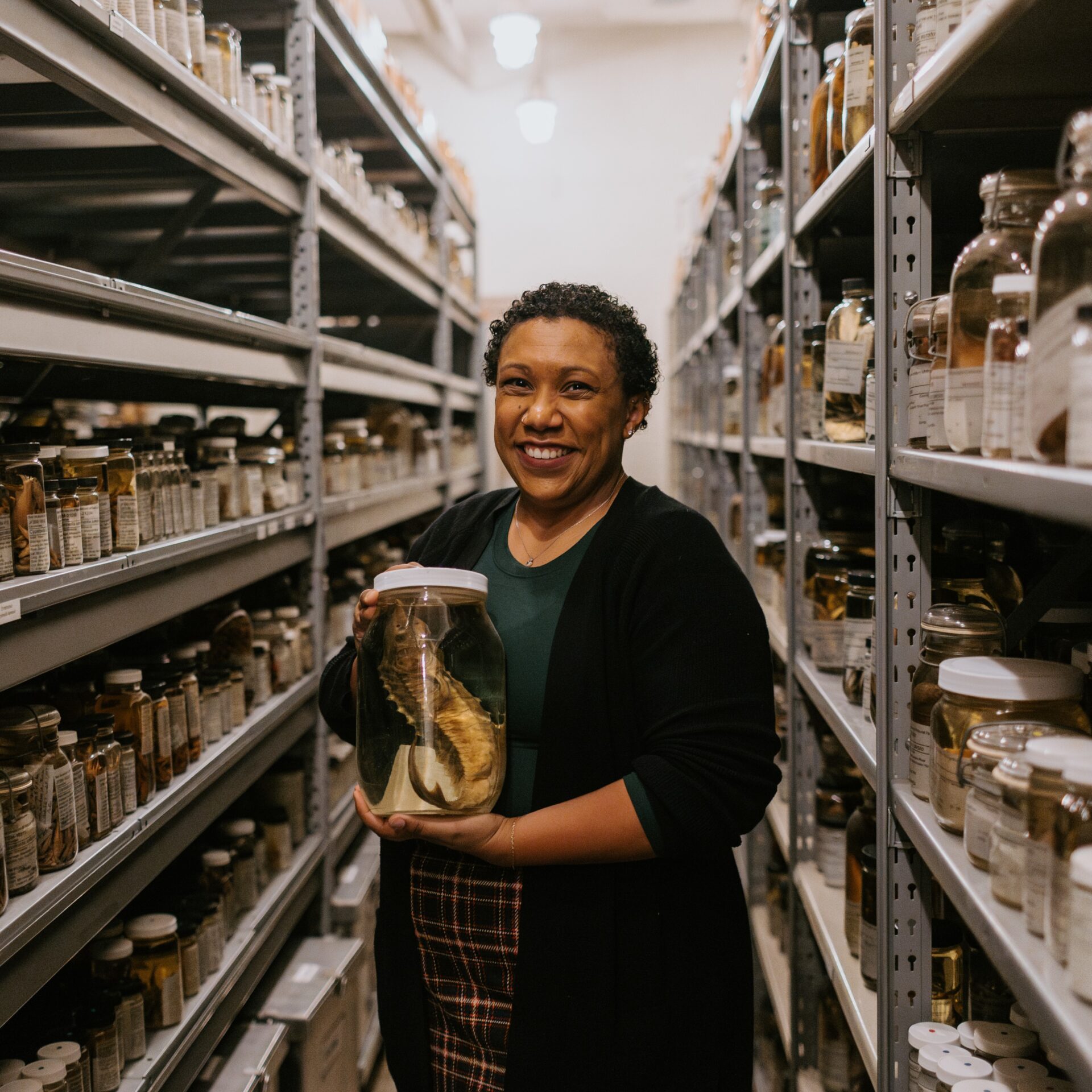
Mollusks & Crustaceans
More than 18,000 lots of specimens
Malacology is the study of the mollusks, including snails and slugs, clams, octopus and squid. Carcinology is the study of crustaceans, a group of arthropods that includes lobsters, crayfish, shrimp, krill, barnacles and crabs.
The Bell Museum’s mollusks and crustaceans collection contains nearly 18,000 lots, some of which date to 1875. The majority of specimens are freshwater mollusks collected in Minnesota, and represent an important Upper Midwest collection. All specimens are entered into a database searchable by collection staff.
The collection also contains the former Minneapolis Library collection of Indo-Pacific mollusks. Specimens are stored as shells or in ethanol.
Minnesota Biodiversity Atlas
The Minnesota Biodiversity Atlas is a searchable, public map showing where Bell Museum animal, plant, and fungal specimens have been found and collected. The Atlas focuses on Minnesota, the meeting place of three of the world’s largest terrestrial ecosystems: eastern broadleaf forests, tallgrass prairies, and coniferous forests. It also represents moments in history before key changes occurred to the landscape, environment, and climate.
What’s most exciting, scientists will use the data in the Atlas to forecast where ecosystems and their associated species may be found in the future.




